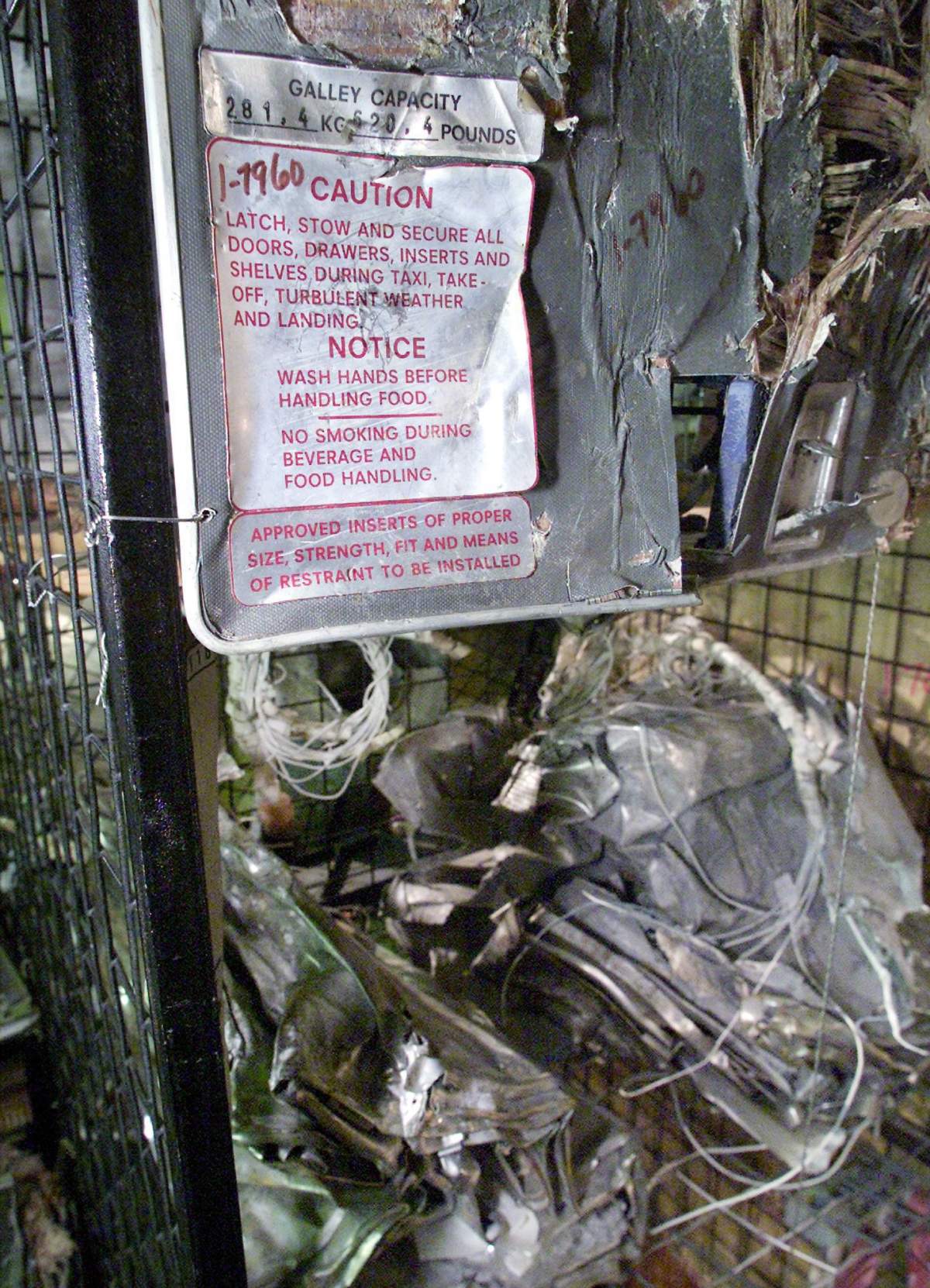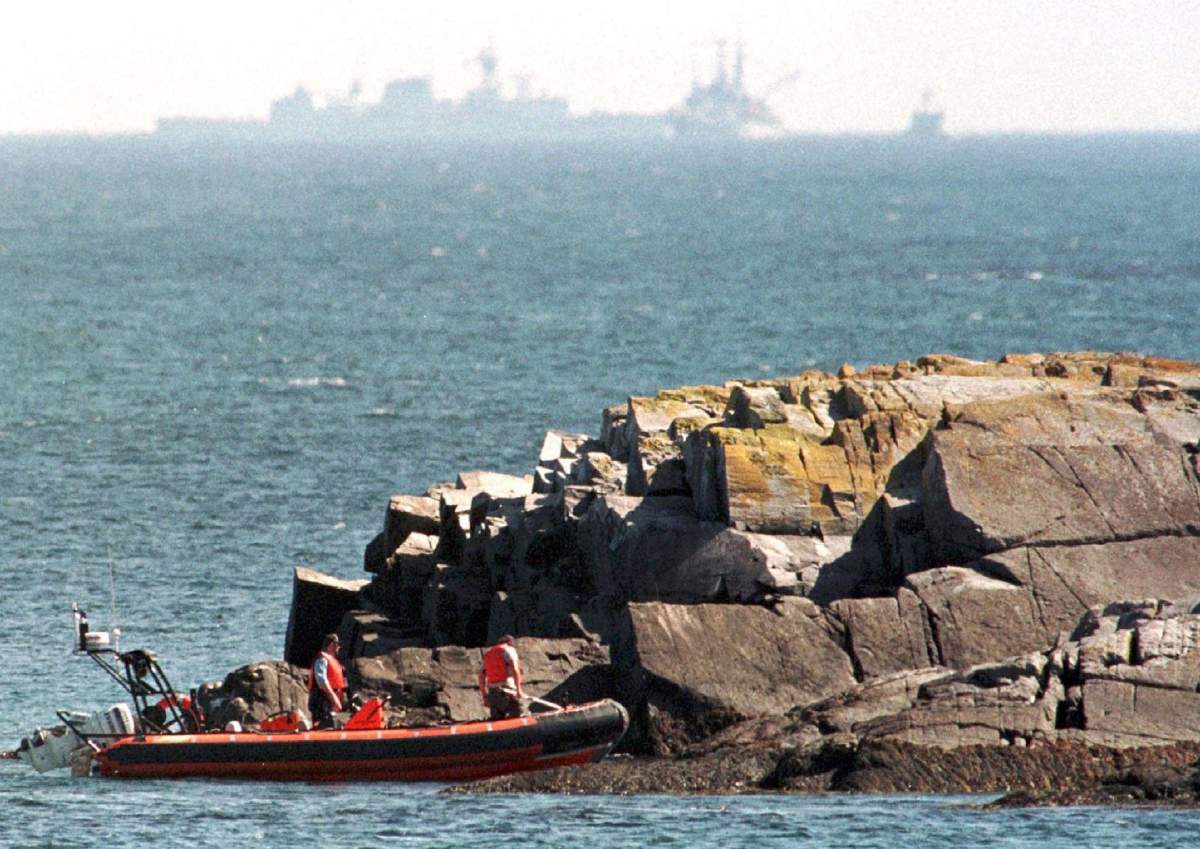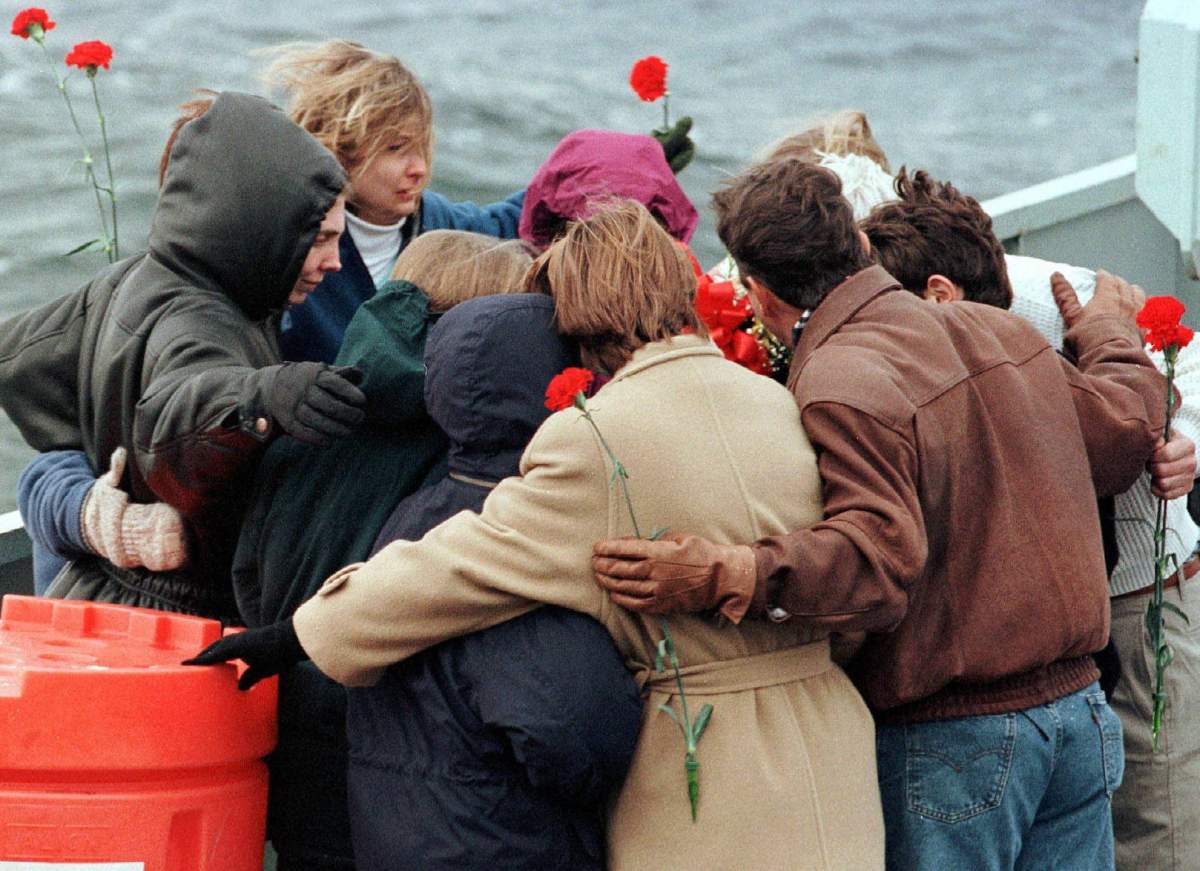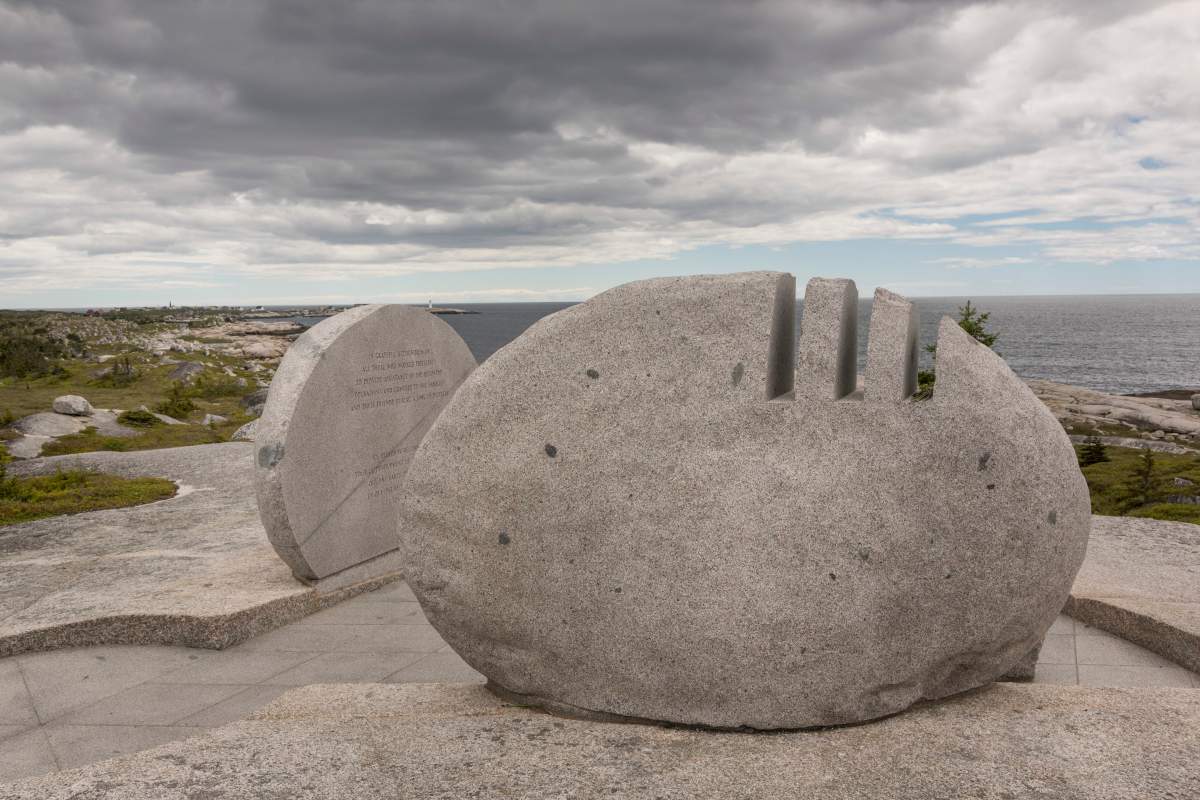229.

It always comes back to that number.
229 lives lost in a single instant; when a giant of the skies tumbled into the ocean near Nova Scotia’s iconic Peggy’s Cove.
229 families irrevocably changed by the failure of a tiny piece of wire.
Swissair Flight 111 was less than an hour into its overnight journey from New York’s John F. Kennedy Airport to Geneva, Switzerland, when the first hint of trouble was detected.
The flight crew in the cockpit of the McDonnell Douglas MD-11 aircraft detected an odour in the cockpit; a faint hint of smoke. The pilot and co-pilot concluded the smoke – which may have appeared to go away for a short time – was linked to the plane’s air-conditioning system.
READ MORE: Peggy’s Cove residents stepped up following Swissair crash
The flight crew quickly determined the smoke was only in the cockpit and not in the passenger cabin. The plane had reached 33,000 feet and its cruising speed
By this time Flight 111 was less than 90 kilometres south of Halifax, just off the coast of Nova Scotia. The flight crew contacted international air traffic control in Moncton and issued a “pan-pan,” meaning they had an urgent but non-emergency situation aboard. They discussed diverting to Boston but decided to head to Halifax to investigate the odour further.
The flight crew began a systematic check of each of the jet’s systems. That’s textbook procedure for a flight crew: find the problem; isolate the problem; solve the problem.
WATCH: A timeline of the aftermath of the Swissair Flight 111 crash

What the crew didn’t know was that above their heads and slightly behind them, in the ceiling above the cockpit bulkhead — a fire had ignited and was spreading rapidly.
Investigators with Canada’s Transportation Safety Board would later conclude the most likely scenario that brought down Flight 111 began with a small section of wire.
The investigation team was led by Vic Gerden, a former Canadian Forces colonel with years of national and international aviation experience.
WATCH: Vic Gerden on the investigation into Swissair Flight 111

The wiring was part of the aircraft’s recently installed in-flight entertainment system. Investigators found evidence of electrical arcing – a high-voltage discharge of electrical energy which can produce a current even across insulated surfaces.
The high-powered discharge of energy ignited sheets of insulation packed into the airplane’s inner walls and outer skin.
The fire was fed by oxygen from the plane’s air-conditioning system when end caps on the pipes feeding the air conditioner failed because of the intense heat.
All of this happened in mere minutes.
WATCH: 20 years after Swissair: Putting together the pieces in Peggy’s Cove

Just 13 minutes after detecting the abnormal odour, the plane’s electrical systems began to record a succession of rapid failures.

Get daily National news
The flight crew declared an emergency and contacted Halifax International Airport with their intention to make an immediate emergency landing.
A minute later, radio and secondary radar contact with Flight 111 was lost. The plane’s cockpit voice recorder and flight data recorder stopped working.
Five minutes after that, Flight 111 plunged into the sea about eight kilometres southwest of Peggy’s Cove and was destroyed. It was 10:31 p.m. on Sept. 2, 1998.
All 215 passengers and 14 crew members were killed.
READ MORE: Swissair Flight 111 crash 15 years later
The response
There was an immediate rescue response. Private boats from the coastal communities around St. Margaret’s Bay headed out to the crash zone and were among the first to arrive at the crash site.
They were met with a sea of floating debris and the overwhelming smell of aviation fuel. It became quickly obvious there would be no rescue.
A Canadian Coast Guard cutter and military helicopters and warships were scrambled to join the search. The TSB dispatched a team of investigators to Peggy’s Cove.
WATCH: A look back at Swissair 111 by investigators and Nova Scotians
Within hours of the crash, the tourist village became a command post for the early stages of the recovery operation.
The investigation became one of the longest and most complex in the history of aviation disasters.
The Canadian submarine HMCS Okanagan located the crash site in the seabed, an irregularly-shaped area about the size of four soccer fields.
The sub had honed in on a locator beacon from the plane’s flight recorders and used divers and ROVs to recover critical pieces of evidence. The flight data recorder was recovered four days after the crash — the cockpit voice recorder a week later.
For 15 months, the wreckage was pulled from the ocean and the seabed. Heavy lift barges picked up what remained of the plane’s largest components like the landing gear and the MD-11’s massive Pratt and Whitney jet engines.
Later, a scallop dragger would make hundreds of sweeps of the crash site to recover smaller parts of the aircraft.
A dredging barge would be used to suction up the seabed for even smaller bits.
Piecing it all together
Shoreline searches and smaller vessels recovered floating debris until about 98 per cent of the aircraft by weight was recovered.
Each piece recovered had to be cleaned, catalogued and examined in detail. A full-scale mock-up of the jet would be built in a hangar at the Shearwater airbase — which had now become the headquarters for the TSB’s investigation.
Gerden’s team discovered that electrical arcing in the entertainment system wiring ignited the covering of the thermal acoustic insulation in the plane’s fuselage. As the fire spread unchecked across the insulation, other components ignited; plastic fasteners, end caps, hooks and eyes and other components in the hidden spaces of the airplane.
The fire spread rapidly causing catastrophic damage to every critical electrical system in the cockpit. Smoke pouring into the crew compartment meant the flight crew couldn’t see their instruments or maintain visual reference points with the outside.
Within hours of the crash, another hangar at Shearwater was converted into a morgue. It quickly became apparent that identifying the bodies would be a difficult task. Only one body was recovered in a condition that would allow what pathologists call “sight identification.”
It would take months of examining dental records and DNA testing to determine the identities of the recovered body parts.
The grim task of sorting the recovered body parts and identifying them fell to forensic pathologists and technicians led by Nova Scotia’s chief medical examiner Dr. John Butt.
The human element
In the days following the crash, family members of the people aboard Flight 111 began to arrive in Halifax.
Some of the families wanted to see the crash site. But that seemed impossible given its location at sea and the scope of the operation to recover bodies and debris. With so many family members arriving, the authorities needed a central place for them to stay and act where they could be briefed on the progress of the recovery operation.
The Lord Nelson Hotel in downtown Halifax became the headquarters for the families and a safe haven. The hotel’s staff became fiercely protective of the families and the families would return the favour — coming back to the hotel year after year to commemorate their loved ones.
It took five years to complete the Swissair Flight 111 investigation. When it was done, the TSB made recommendations that would bring sweeping changes to the aviation industry — but not necessarily changes that would be outwardly noticeable to most passengers.
The flammable insulation blankets were ordered removed from all aircraft and new flammability standards developed for aircraft components.
New guidelines for flight crews dealing with smoke conditions were developed. Checklists were simplified and additional training ordered for flight crews.
The TSB raised alarming questions about the quality of flight data recorders and cockpit voice recorders suggesting that it’s time for the aviation industry to look at methods of “dumping” data from aircraft to secure ground-based servers to preserve the information.
It also suggested that it’s time for the industry to examine the use of cockpit video recorders so investigators would have a visual record of events leading to a crash.
Visual inspection of wiring in aircraft was ordered to look for the telltale signs of arcing, or to detect the conditions that could lead to what’s called a “lead arcing event.”
The in-flight entertainment system used by Swissair was removed from its other aircraft. The system was later de-certified for use and abandoned. It was never used in other aircraft.
Led by the U.S. Federal Aviation Authority, the certification process for in-flight entertainment systems was dramatically toughened.
About four years after the crash, Swissair ceased operations and stopped flying.

A province changed
The aftermath of the crash was a dark moment for Nova Scotia, but also one of its brightest.
Nova Scotians responded to the family members of the victims with compassion and kindness. Homes were offered to family visiting family members; drives to Peggy’s Cove were provided; in some cases, cars were delivered to family members so they could take themselves to St. Margaret’s Bay. Friendships and bonds forged in the tragedy have endured for years after the crash.
The government of Nova Scotia directed a commission to look for ways of commemorating the victims and the extraordinary response of Nova Scotians to the crash.
A memorial to the crash was erected near Peggy’s Cove at a rocky spot called the Whalesback. A second memorial and mass grave was erected directly across St. Margaret’s Bay in Bayswater.
From the Whalesback, it’s a magnificent view taking in the whole of the bay and the distant horizon.
The words on the stone monument reminding visitors of the fate of the 229 people lost on Sept. 2, 1998: “They have been joined to the sea and the sky.”























Comments